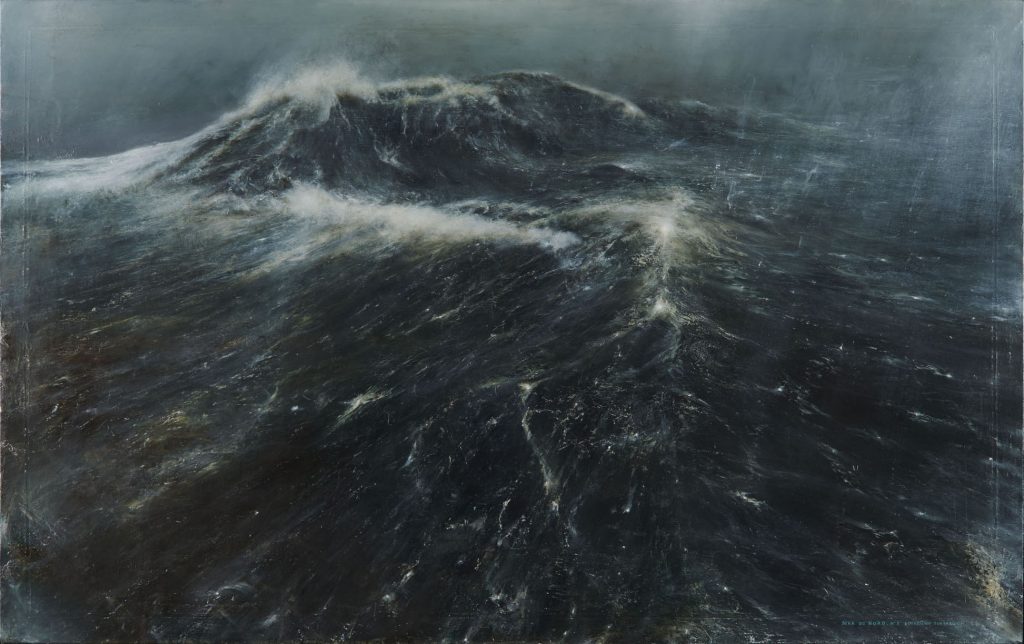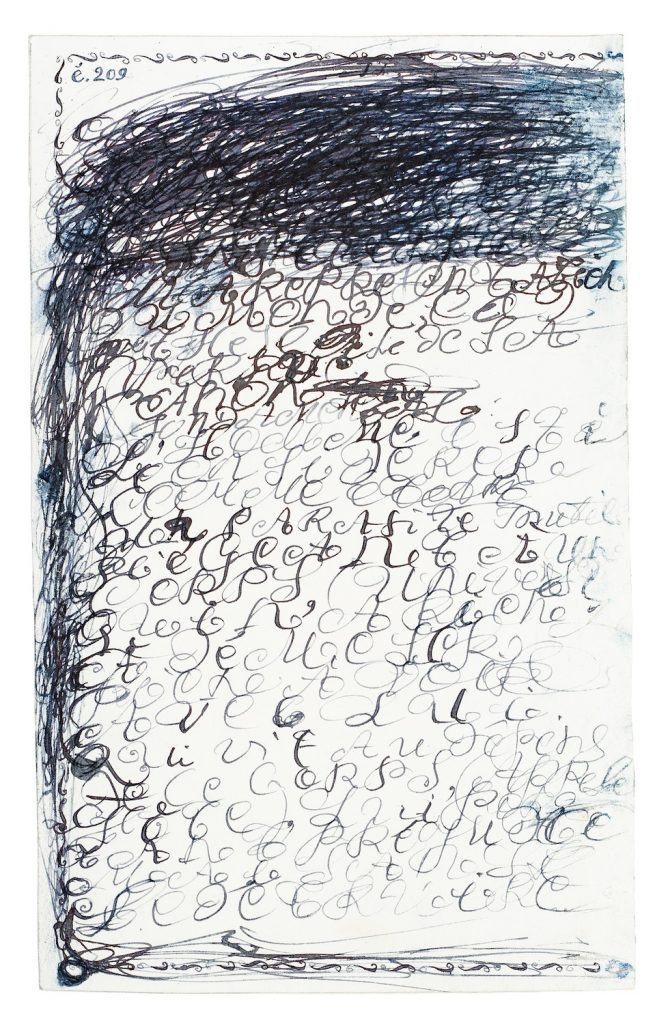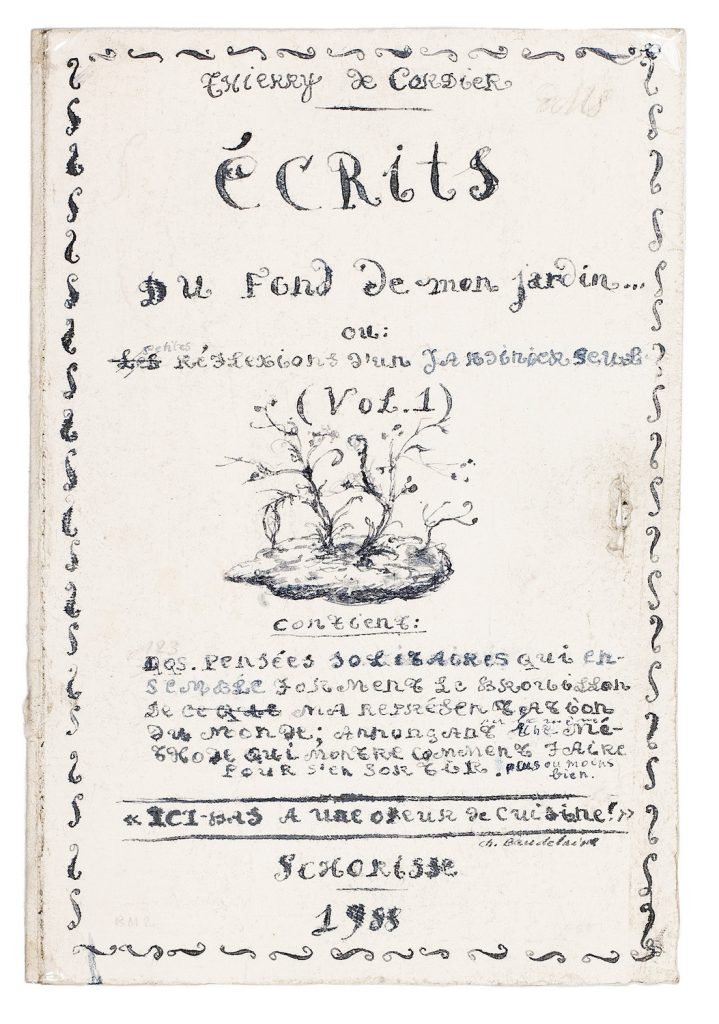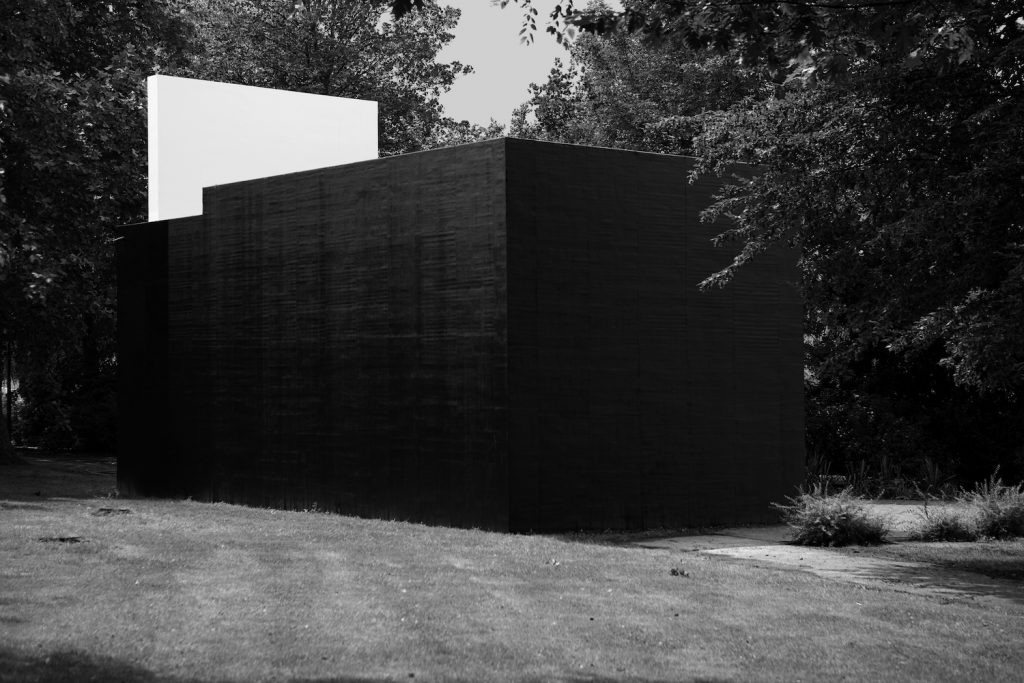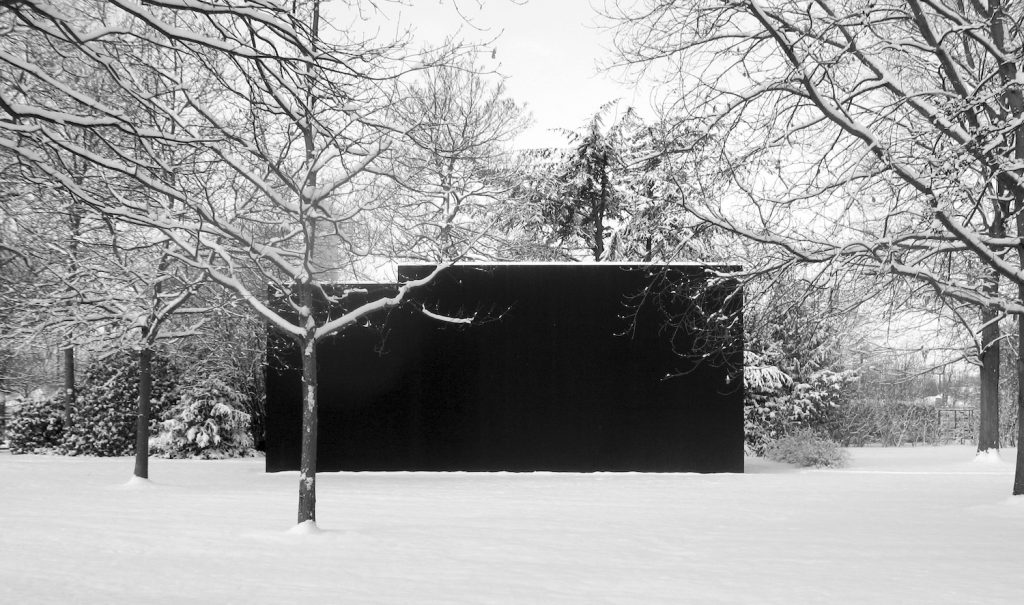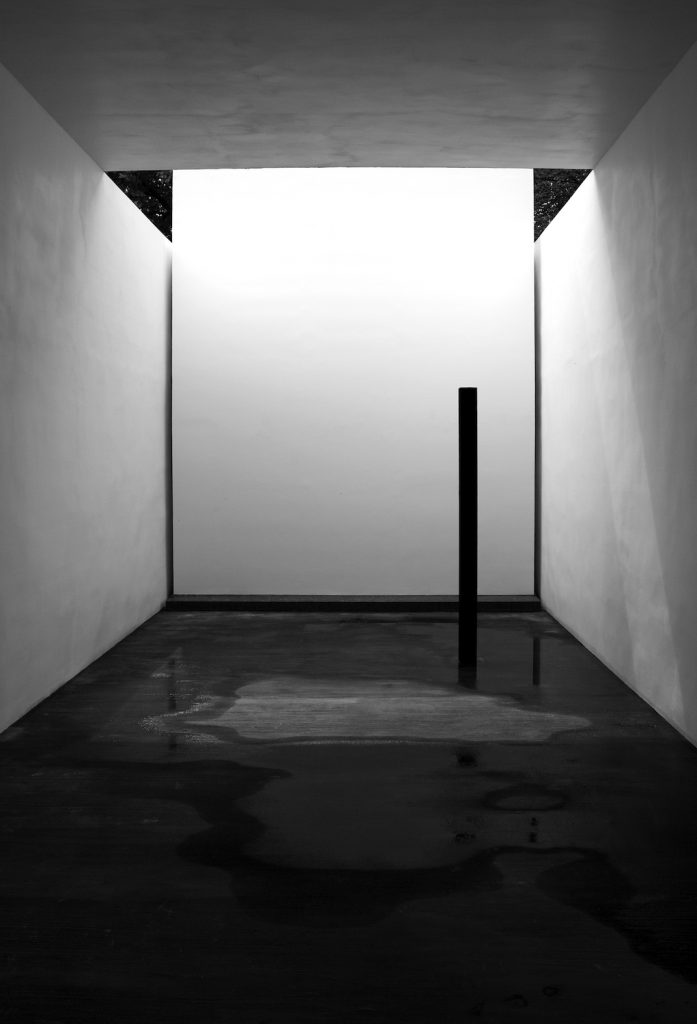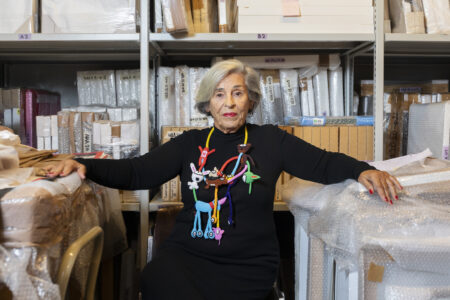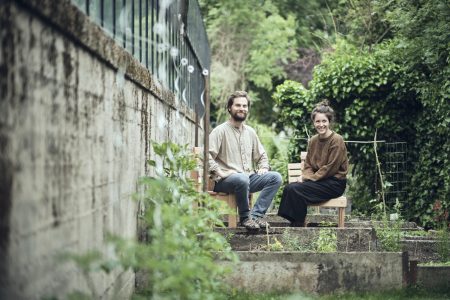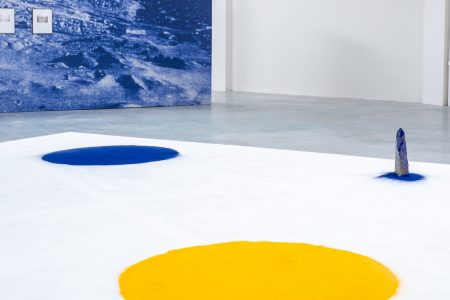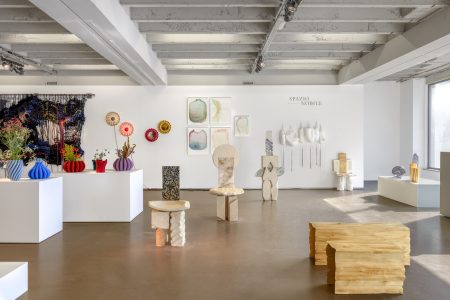Thierry De Cordier: Imagining the Invisible
This interview with Thierry De Cordier originally appeared in the A/W 2021 issue of TLmag36: All is Landscape. De Cordier’s exhibition “Passe Montagne” is on view at Xavier Hufkens Gallery in Brussels through October 14, 2023.
Nature reflected in art and brought to life on canvas has always been more than simply an image, providing a key to the artist’s inner world, their moods and feelings. Materialising the invisible and opening a door to an inner universe is exactly what Belgian artist Thierry De Cordier achieves through his gloomy, dramatic seascapes, which, at the same time, constitute psychological landscapes; This painterly approach brings to mind 17th century Dutch painter Jacob van Ruisdael, known for his studies of moody skies, but also to the traditions of Chinese landscape painting, whose beginnings date back to the 12th and 13th century and were strongly influenced by Buddhism, using paintings of mountains, forests and water as a starting point for meditation.
De Cordier, whose practice has always revolved around humans and their habitat, is a master at creating spaces for introspection and contemplation, not only through evocative paintings but also through sensorial architectural installations. The core of his minimal, darkly coloured “Chapelle du rien”, installed at the Psychiatry Centre in Saint- Norbert in Duffel, consists of a white interior wall (the “Wall of Naught”) which rises up out of a black walk-in cube through an opening in the roof; This is a window to the sky but also an entry point for rain, wind, leaves, and is above all, an attempt to envelop the visitor in a contemplative state, giving him a space to reflect on the major questions informing De Cordier’s work: “Who are we and what is our relationship to the world around us?”
TLmag: While the first landscape painters were not interested in true renditions of nature, in the 18th century, the genre shifted more into realism. Where do you see yourself in this tradition?
Thierry du Cordier: I’m both. I paint real landscapes as well as imaginary ones. Though it’s still my intention to end up in pure abstraction.
TLmag: I have read you that you dislike theories about art. Would you elaborate?
T.d.C: It is not that I hate theories about art, I hate bad theories about art. I am referring to the plethora of texts written by university-educated critics, for the simple reason that most of those writings are pedantic, indigestible and completely useless. In this regard, I recommend reading George Steiner, such as his book, “Real Presences”.
TLmag: Nature and landscape seem to be a recurring theme throughout your body of work. What draws you to nature?
T.d.C.: Among other things, the fact that it doesn’t distract me unnecessarily.
TLmag: How would you describe your relationship with nature?
T.d.C.: As calming.
TLmag: You have said that, “In the city, among the people that is, I feel compelled to defend myself.” Do you turn to nature as a sort of escapism?
T.d.C.: I retreat to the countryside, not because I am especially attracted to nature, but to distance myself from the human hassle.
TLmag: Do you see nature as an antidote to a society that is increasingly ruled by technology?
T.d.C.: I am beginning to wonder if we have the same understanding of nature. I suspect that mine is less lyrical. By the way, isn’t technology ruling and present everywhere nowadays? From deep Antarctica to high in the Himalayas?
TLmag: What kindled your desire to focus on painting landscape motifs?
T.d.C.: At the end of 1997, just before moving to France, as a farewell, I painted a panoramic view of the country where I had been living. It was my very first land- scape on canvas. From then on, I became a landscape painter. To paint landscapes is just something that happened to me.
TLmag: What attracted you to the study of seascapes specifically?
T.d.C.: The pictorial possibilities it offers me as a painter.
TLmag: You often add written captions to your paintings. Why is that?
T.d.C: Since there are no signs of any human presence in my landscapes, I sometimes add verses to evoke human presence. I learned this poetic practice from the Old Chinese Landscape Masters.
TLmag: Your earlier work was quite attached to your surroundings, physically and content-wise. Is your art generally very connected to where you live?
T.d.C.: I live by the sea and I paint the sea. Twice a year I stay in the mountains of the Sierra Nevada and during the periods I live there, I paint mountains. Simply put, by the sea I paint the sea, and in the mountains, I paint mountains. However, it happens that by the sea I paint mountains and that in the mountains I paint the sea.
TLmag: What I find interesting is that while you are an atheist, your gallery writes that you are occupied with the “subject of God.”
T.d.C.: I see no contradiction in being an atheist and being occupied by the dis- mantling of God.
TLmag: Do you have a spiritual relationship with nature? Is nature your religion? Your Chapelle du rien gives me this impression…
T.d.C.: That sounds a bit new age to me. To be honest, I don’t have a spiritual
relationship with nature. I don’t communicate with it and I don’t rub myself against tree trunks. The name I gave to the chapel speaks for itself. It depicts “the nothing.”
TLmag: How would you describe the role architecture can play in your artistic practice?
T.d.C.: First there is architecture, then comes art. It has always been like this. First there was a cave, and then came the cave paintings. At least that’s how I see it. First, I made some buildings and after that I started painting.
TLmag: What is your take on climate change and the destruction it brings to nature and the landscapes around us?
T.d.C.: There is that which we can do something about, but there is also that which we can do nothing about. Judging by what we are doing now, which also includes what we are not doing, or what we cannot do, it looks like we have already lost the battle.
xavierhufkens.com
@xavierhufkens
Photos courtesy the Artist and Xavier Hufkens, Brussels
This interview was done in English and translated into French by TLmag.
